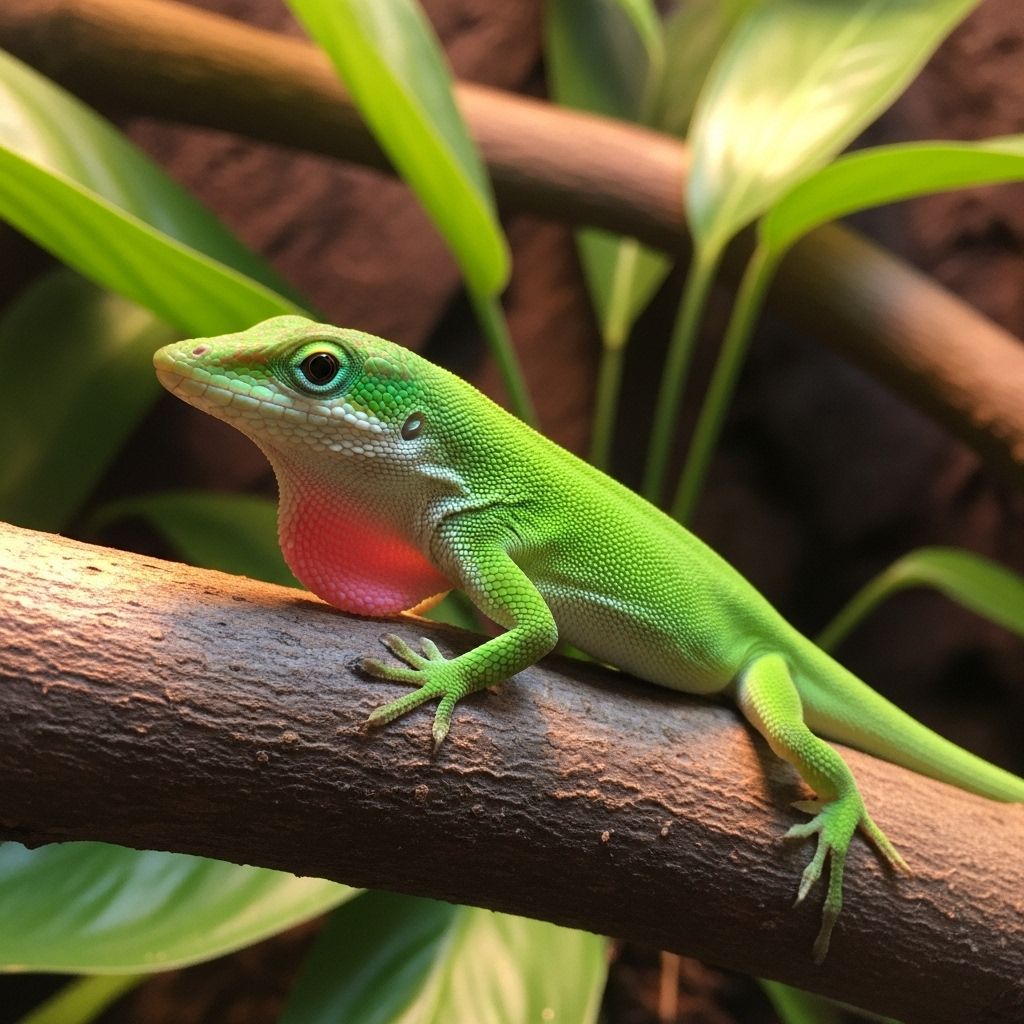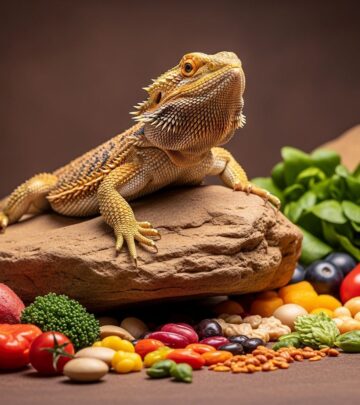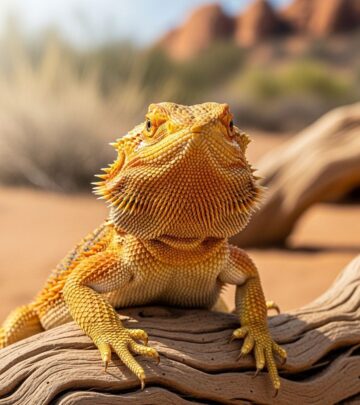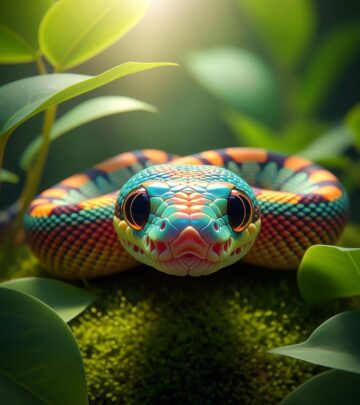Green Anole Lizard Care: Complete Guide for Beginners
Proper temperature, lighting, and nutrition unlock vibrant health and natural behaviors.

The green anole (Anolis carolinensis) is a popular, small, and active lizard species beloved for its vibrant green color, manageable size, and lively behavior. Whether you are a newcomer to reptile keeping or looking to expand your knowledge, this comprehensive guide covers every aspect of caring for green anoles—from habitat setup to daily maintenance, feeding, health, and handling.
Overview of the Green Anole
- Scientific Name: Anolis carolinensis
- Common Names: Green anole, American chameleon (despite not being a true chameleon)
- Adult Size: 5–8 inches (including tail)
- Lifespan: Typically 3–6 years in captivity with proper care; some may live slightly longer
- Difficulty Level: Beginner-friendly
- Native Range: Southeastern United States, from North Carolina through Florida and west to Texas
- Diet: Insectivorous (live insects only, no plant matter)
Green anoles are diurnal (active during the day) and most active when temperatures and humidity are optimal. While they are sometimes referred to as “chameleons” due to their color-changing ability (green to brown), they are not related to true chameleons.
Behavior and Temperament
Green anoles are curious and alert, often seen climbing or sunning themselves in their enclosure. They are not aggressive, but can be shy and easily stressed if handled too frequently. Most green anoles prefer to observe their surroundings rather than interact directly with keepers.
- Generally tolerate gentle, minimal handling; excessive handling can stress the lizard and should be avoided
- Can drop their tails (a process called autotomy) as a defense mechanism—never grab or restrain by the tail
- Ideal for observation and learning about reptile behavior
Newly acquired anoles need at least 1–2 weeks to adjust to their new environment before any minimal hand contact is attempted. Always supervise children around green anoles and educate them on gentle, respectful interaction.
Housing and Enclosure Setup
Enclosure Size and Design
- Minimum for one or two anoles: 10-gallon tall tank (vertical space is important)
- For three to four anoles: 20-gallon or larger
- Best enclosure: Front-opening glass terrarium with vertical climbing space
- Substrate: Reptile carpet, paper towels, or coconut fiber are all suitable; avoid sand or gravel as they can cause impaction if ingested
- Plants: Live or artificial foliage and branches for climbing, hiding, and enrichment
Provide a densely decorated setup with vines, sticks, and leaf cover to mimic the natural habitat and offer security. Use non-toxic plants and ensure any substrate is clean and free of chemicals or fertilizers.
Temperature, Lighting, and Humidity
- Basking spot: 85–90°F (29–32°C)
- Ambient temperature: 75–80°F (24–27°C)
- Nighttime temperature: No lower than 65°F (18°C) at night
- UVB lighting: 5.0 UVB bulb, 12 hours per day; essential for proper calcium metabolism and overall health
- Humidity: 60–70%; mist enclosure daily with a spray bottle or use an automated misting system
Aim for a thermal gradient in the enclosure, with a warmer basking area and cooler zones, so your anole can regulate its body temperature. Use a digital thermometer and hygrometer to monitor conditions. Never position heat lamps inside the enclosure; always mount outside, above a secure mesh lid.
Water and Hydration
- Green anoles prefer to drink water droplets from leaves; mist the enclosure at least once per day
- Provide a shallow water dish, but do not rely on it as the sole hydration source
- A dripper or automated misting system can help maintain humidity and offer water access
Diet and Feeding
What to Feed Your Green Anole
- Main diet: Live insects—crickets, small roaches (Dubias), mealworms, phoenix worms, waxworms (treats), flightless fruit flies, small silkworms, and small red worms
- All feeder insects should be appropriately “gut-loaded” (fed nutritious greens and vegetables 24–48 hours before being offered)
- Insects must be smaller than the width of the anole’s head to prevent choking
- Offer calcium/vitamin D3 powder supplement on insects 3 times per week; multivitamin powder once per week
Feeding Schedule
- Juveniles: Feed daily, 2–3 insects per feeding or as much as they will eat in a 10–15 minute period
- Adults: Feed every other day, 2–3 appropriately sized insects per feeding
- Remove uneaten food after an hour to prevent spoilage and stress
Handling and Taming
Green anoles are fragile, active lizards that can become stressed by frequent handling. If handling is necessary, be as gentle and minimal as possible:
- Start handling only after a 1–2 week acclimation period
- Approach slowly and allow the anole to walk onto your hand
- Handle over soft surfaces in case they leap or drop
- Never grab or restrain by the tail—tails break off easily as a defense response (the tail regrows, but not to original length or appearance)
- Always wash your hands before and after handling to prevent the spread of bacteria such as salmonella
Cleaning and Maintenance
- Daily: Spot clean the enclosure, remove soiled substrate, uneaten food, and feces
- Weekly: Wash water and food dishes; deep-clean the enclosure at least once per week
- Thorough cleaning steps:
- Move the anole to a temporary secure container
- Remove all substrate and decorations
- Scrub tank and furnishings with a reptile-safe cleanser or diluted (3%) bleach (leave for 10 minutes, rinse very thoroughly, dry completely)
- Return fresh substrate, clean decorations, and your anole only after all surfaces are dry
- Always wash your hands before and after working in the enclosure
Health, Wellness, and Common Problems
With attentive care, green anoles often remain healthy, but they are susceptible to a few potential health issues. Being alert to changes in appetite, color, or activity is crucial.
| Issue | Symptoms | Recommended Action |
|---|---|---|
| Vitamin Deficiency | Bumps, swelling, sores, limb paralysis, breathing issues | Consult a reptile vet. Check supplements and diet. |
| Mouth & Snout Infections | Sores or discoloration around mouth or snout | Clean area gently with cotton swab and consult a vet if not improved. |
| Metabolic Bone Disease | Weakness, deformities, tremors | Ensure proper UVB lighting and calcium/D3 supplementation. |
| Shedding Issues | Retained skin, dull color, lethargy | Provide high humidity, moist hide, or gentle soak in lukewarm water. |
Always consult a veterinarian with reptile experience if your green anole shows signs of illness, such as persistent lethargy, weight loss, abnormal swelling, or loss of appetite. Early diagnosis and intervention are critical.
Shedding and Molting
- Healthy adults: Shed skin every 4–6 weeks
- Juveniles: Shed more frequently due to growth
- Lizards shed in patches rather than a single skin, unlike snakes
- During shedding, create a humid hide with moist sphagnum moss or paper towels so the anole can rub off old skin
- If pieces remain, offer a shallow, lukewarm soak—make sure the head is out of the water
- Anoles may eat their shed skin; this is normal and allows them to regain nutrients
- Limit handling during shedding periods to minimize stress
Supplies Checklist
- 10- or 20-gallon vertical terrarium with screen lid
- 5.0 UVB bulb and fixture
- Under-tank heating pad (if ambient room temp is low)
- Branches and faux/live plants
- Reptile carpet or coco fiber substrate
- Digital thermometer and hygrometer
- Misting bottle or automated mister
- Calcium supplement with Vitamin D3
- Reptile multivitamin supplement
- Mealworm dish, cricket keeper, and cricket quencher (for keeping feeder insects)
- Vitamin-rich food for gut-loading insects (e.g., carrot, leafy greens)
- Water dish and shallow soaking container
- Antibacterial hand soap (for hygiene)
Frequently Asked Questions (FAQs)
Q: Is the green anole a good pet for children or beginners?
A: Green anoles are considered excellent beginner reptiles due to their manageable size, straightforward care compared to some other reptiles, and relatively simple dietary needs. However, they are best suited for observation rather than frequent handling, and children must be supervised at all times.
Q: How can I tell if my green anole is healthy?
A: Signs of health include bright, alert eyes; smooth and active movements; healthy appetite; regular shedding; and vibrant coloration. Lethargy, persistent brown coloration, lack of appetite, or any visible injuries should prompt a veterinary consultation.
Q: Can green anoles be housed with other reptiles?
A: Green anoles can sometimes be housed with other anoles of similar size, but avoid overcrowding and never mix with larger reptiles or aggressive species. Male anoles are territorial and should not be kept together; keep only one male per enclosure.
Q: How do green anoles change color?
A: These lizards can change from bright green to brown based on mood, health, stress, temperature, and light exposure. Persistent brown color may indicate stress or illness.
Q: What should I do if my green anole loses its tail?
A: Tail loss is a natural defense mechanism. The tail will regrow over time, though it may differ in appearance. Provide optimal nutrition, keep stress low, and avoid further injury during regrowth.
Final Tips for Success
- Research continually and consult specialized reptile resources for advanced topics
- Regularly check your enclosure’s temperature and humidity with accurate instruments
- Handle your anole rarely and gently—these pets are best enjoyed for their fascinating natural behaviors
- Provide environmental enrichment, such as climbing opportunities and new branches, to keep your anole mentally stimulated
- Make veterinary wellness checks part of your annual care routine, especially if you notice behavioral or physical changes
With proper care, green anoles bring color and curiosity into the home, making them an excellent entry point for reptile enthusiasts and nature lovers alike.
References
- https://www.petmd.com/reptile/pet-anole-care-sheet
- https://reptilesmagazine.com/green-anole-care-sheet/
- http://www.exoticpetvet.com/anole-care.html
- https://www.youtube.com/watch?v=aHXgtWYCEpw
- https://reptifiles.com/green-anole-care-sheet/
- https://www.youtube.com/watch?v=OhfleAijZd8
- https://www.backwaterreptiles.com/reptile-care-sheets/green-anole-care-sheet.html
Read full bio of Sneha Tete












